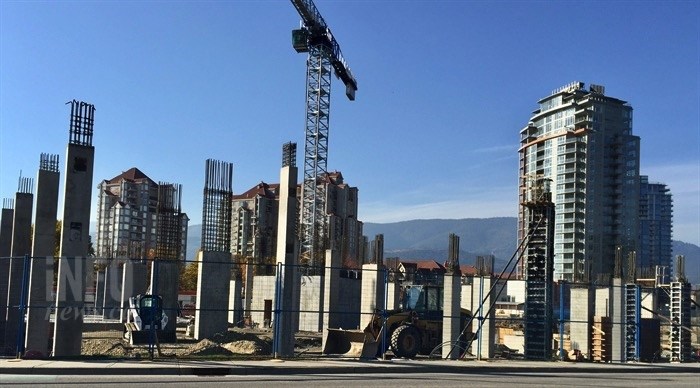Kamloops, Kelowna could learn about housing affordability from this Lower Mainland city

While Kamloops and the Okanagan struggle with a shortage of affordable rental housing, some Lower Mainland cities are way ahead and making it happen.
One of those cities is Port Moody.
Port Moody expects new multi-family developments to make up at least 15% of truly affordable units.
“We’re working hard at insuring that we can provide as much affordable housing in Port Moody as we can,” Mayor Meghan Lahti told iNFOnews.ca. “There are unique opportunities in Port Moody to build affordable and people are taking us up on it.”
Lahti, who was just elected mayor in October, has been on council since 1996 and was a leader in bringing in an affordable housing policy for the city, which was adopted on an interim basis in 2020 with a more permanent version adopted this past April.
It wasn't the first in the Lower Mainland, with cities like Richmond and North Vancouver introducing policies earlier.
Not all Lower Mainland cities require 15% of new housing to be affordable and rules are different in each but Port Moody, with a population of 33,500, is a good example of what can be done.
One project with 128 units has 50% affordable. Another has 13% of its 60 units designated as affordable while a third have come in at 25% below market rental price.
A 2,000-unit project that recently came to council with no affordable housing was sent back to the developer to include affordable units.
The policy said the city “expects” 15% of units to be “below-market” or 6% to be “non-market” rental units if there is a rezoning or Official Community Plan amendment.
The definition of affordable is crucial.
The developer of what was originally a 13-storey highrise on city-owned land on the former RCMP site in Kelowna was allowed to add another 12 storeys by promising 10% of the units would be affordable.
When the proposal came back to council with the details, the language had changed to “attainable” which the developer defined as 30% of the average household income for the city.
These were all studio suites of 325 to 350 square feet so the average household income – which is mostly two-income families – wouldn't be appropriate. Council rejected that proposal, arguing the average renter income would be a more appropriate measure.
READ MORE: Controversial downtown Kelowna rental highrise developer painted himself into a corner
In Port Moody, the below-market units have to be rented at 20% below the median rent in the Tri-Cities area as determined by Canada Mortgage and Housing Corporation. Non-market rentals are for very low income households earning less than $30,000 a year.
The Port Moody policy allows for the “expected” percentages of affordable housing to be eased if the developer can show there's something unique about the development or there would be an economic hardship.
An outside economic analysis would have to be done to demonstrate hardship but no one has gone that route yet, Mayor Lahti said.
“What we need to do is make sure that we are providing the right kind of housing in the right place,” she said. “The goal is to bring in more affordable housing. It may be a situation where the overall new housing in Port Moody is 15%, but in some developments it might be higher and in some it might be lower.
"In my mind, as long as we’re striving towards increasing our affordable housing component, that’s what important.”
She also knows, given high land and building costs, providing affordable housing means not being able to negotiate other amenities for the city.
That was the case with the 25-storey tower on the former Kelowna RCMP detachment site. The city did not ask for affordable housing because it was getting an arts hub and extension to its downtown art walk.
Similarly, the city is selling land near the Bennett bridge that could have a 40-storey tower but no affordable housing because it wants a “landmark” entrance to the city.
READ MORE: Why this Okanagan city can't get affordable housing in new highrises
Both Kamloops and Kelowna do have housing policies that talk about affordability issues.
The cities have incentives to encourage rentals, talk about providing land for subsidized housing and have infill and density bonusing policies. No one in either city seems to have caught on to the idea that luxury apartments and highrises could have truly affordable units as well.
To contact a reporter for this story, email Rob Munro or call 250-808-0143 or email the editor. You can also submit photos, videos or news tips to the newsroom and be entered to win a monthly prize draw.
We welcome your comments and opinions on our stories but play nice. We won't censor or delete comments unless they contain off-topic statements or links, unnecessary vulgarity, false facts, spam or obviously fake profiles. If you have any concerns about what you see in comments, email the editor in the link above.



